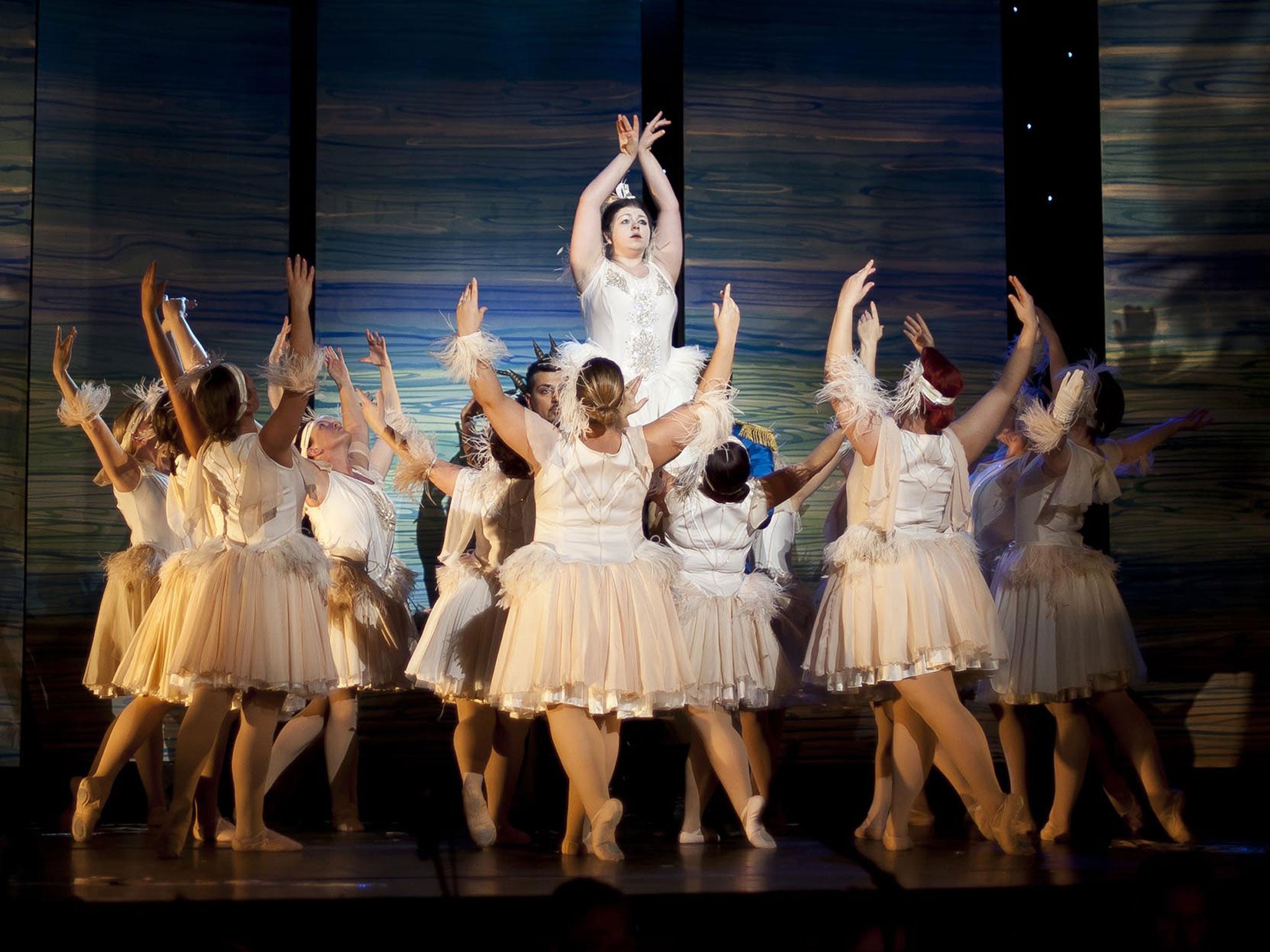Channel 4's new 'Big Ballet': Defying ballet’s body politics
Holly Williams reports on a new Channel 4 show giving a leg-up to plus-sized dancers

Classical ballet is known for slim limbs, fine lines – and for making punishing physical demands on dancers. Horror stories of anorexic ballerinas and bullying ballet masters have a hold on the popular imagination – for which, disgruntled industry insiders claim, films from The Red Shoes to Black Swan are to blame.
But a troupe of dancers is about to jeté on to our screens who don’t fit that narrative. For the Channel 4 documentary series Big Ballet, 18 amateur plus-sized dancers were selected from 500 applicants for an experiment: under instruction from former Royal Ballet principal Wayne Sleep and dancer turned artistic director Monica Loughman, the larger ladies (and a couple of men) had just 20 weekends to master Swan Lake.
The three-part series follows all the conventions of reality TV, with injuries, tiffs, “can they pull it off?” tension and sobbing backstories – many had been told they were too fat to dance when they were little. Loughman and Sleep (who at 5’2”, had to overcome sizeism himself) ultimately take it seriously – and don’t want viewers to smirk. Channel 4, one suspects, wants to have its cake and pirouette. Big Ballet does feature empowering “journeys”, but the cameras also linger on graceless audition tapes and galumphing rehearsals: dances of the sugar-plump fairies.
Sleep admits to worrying about the project’s credibility. “I didn’t want to make a mockery of classical dance. And I didn’t want to laugh at people who have some problem with their weight,” says Sleep – although he did upset his girls during filming by blithely referring to them as “fat”. “I didn’t apologise; in the Royal Ballet you’d say you were having a ‘fat day’, meaning you were a bit bloated. I said [to participants] ‘look, we’ve got to be in it together… [and] once this show goes out, people are going to call you all sorts of things’.”
Sleep is not out to truly challenge the body fascism of ballet institutions – rather provide an alternative paradigm. “If you put one of my girls in a professional corps de ballet it would look crazy, like a blob on a sheet of wonderful lines. However, if you have them all in a company together, there is potential…”
Not everyone agrees. “I thought it was preposterous,” says choreographer Derek Deane of his first reaction. He watched their final performance of Swan Lake and, sadly, it didn’t change his mind. “I thought they were very courageous, and it did things for each of them individually, for their confidence. [But] it doesn’t suit the art form… the basis of classical ballet is shape: thin ankles, long necks, sloping shoulders... It’s absolutely brutal. But for perfection, it’s essential.” Deane goes as far as to suggest that today’s dancers “almost have to be masochistic, to be able to put up with the pain”, as works by some contemporary choreographers (he cites Wayne McGregor and William Forsythe) “destroy” the body.
Meanwhile, endemic anorexia in the dance world is a news-cycle favourite: the BBC reported last summer that eating disorders are 10 times more likely amongst dancers, while the English National Ballet School found itself in trouble recently after tweeting that pupils should “work off all that Xmas food”. So might Big Ballet actually have a serious point, challenging demands that dancers be slim?
“If you train as hard as a dancer trains every day you’ll never be fat… but yes, there absolutely is an aesthetic ideal,” says Evening Standard dance critic, Lyndsey Winship. The pressure to be thin, she concurs, is definitely there – partly thanks to fashions changing during the 20th century, with choreographers such as George Balanchine producing work for rib-revealing physiques. “As a dance-lover and a feminist, I do wrestle with the fact that ballet is an art form with a very prescribed,idealised image of how a woman (and man) should look.”
Deborah Bull, ex-ballerina and former Creative Director of the Royal Opera House, points out this is a wider trend: “The feminine ideal, be that a nymph in a painting, a Hollywood actress or a ballet dancer, has got progressively leaner and leaner.” But ballet-skinny is different to fashion-skinny. “The process of learning to be a ballet dancer, which takes at least 10 years, involves eight hours of exercise a day. We don’t have this conversation about marathon runners. We totally understand that the process of training creates a type of physique. So why are we having [this conversation] about ballet dancers?” Such debate might even contribute to the problem, fetishising female bodies and their pretty, tippy-toed appearance rather than viewing them as lean, mean, athletic machines.
Back on Big Ballet, it’s clear that the participants have gained from the experience, reconnecting with their bodies, their love of music and movement, and the belief that big can be beautiful. It changed their self-image – even if changing the parameters of ballet may be an impossible nut to crack.
‘Big Ballet’ starts on 6 February at 9pm, Channel 4
Join our commenting forum
Join thought-provoking conversations, follow other Independent readers and see their replies
Comments